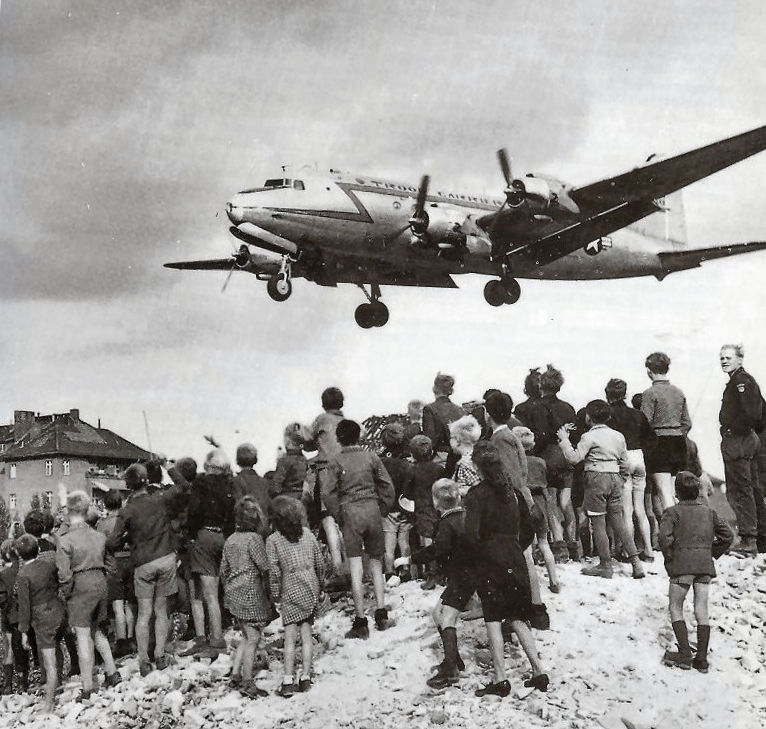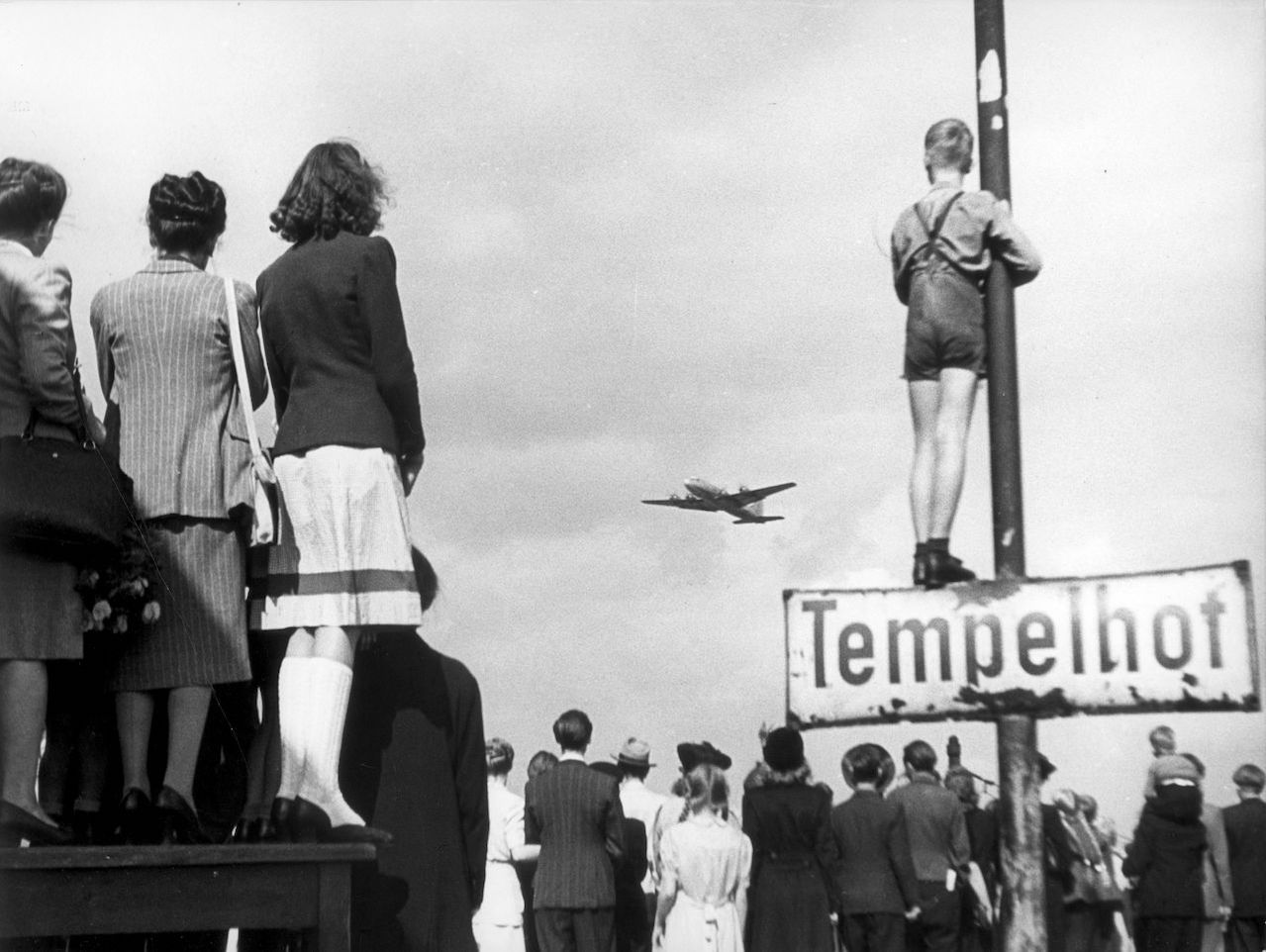24 June 1948 saw the start of the Berlin Blockade, which, as a direct consequence, led to the Berlin Airlift. But what were these two events that were so pivotal in the early post-war years of the Cold War?
Misery and want
 “The seeds of totalitarian regimes,” said US president, Harry S. Truman, a year earlier in March 1947, “are nurtured by misery and want.” In other words, communism appealed to those suffering from hardship. Remove the hardship; you remove the appeal of communism.
“The seeds of totalitarian regimes,” said US president, Harry S. Truman, a year earlier in March 1947, “are nurtured by misery and want.” In other words, communism appealed to those suffering from hardship. Remove the hardship; you remove the appeal of communism.
Known as the Truman Doctrine, the President believed that communism had to be contained, and that America could not, as it did after the First World War, turn its back on Europe – isolationism was no longer an option. Japan’s attack on Pearl Harbor in December 1941, which brought America into the war, was proof that physical distance was no longer a guarantee of safety. In the post-war era, a stable Europe and the future of the ‘free world’ was a necessity.
The Marshall Plan
To alleviate the hardship, and to deprive communism of its foothold, the US introduced the Marshall Plan, named after its originator, George C. Marshall, a huge package of economic aid offered to all nations of Europe. Sixteen nations of Western Europe accepted the offer, which by 1951 had amounted to $13 billion. Although offered also to Eastern Europe and the Soviet Union itself, Stalin was never going to allow American / capitalist interference with the Soviet economy, and nor would he permit his satellites.
The Marshall Plan, therefore, had the effect of reaffirming Winston Churchill’s concept of the Iron Curtain (a phrase he coined during a speech in Missouri in March 1946) by forcing countries to decide whether their loyalties lay to the West or East.
The Marshall Plan also contributed to the unravelling of the fragile co-existence of East and West Berlin. Berlin, one hundred miles within the Soviet hemisphere, was split into four zones, one for each of the Allied powers, with the British, American, and French zones in West Berlin and the Soviet zone in the east. A line of communication through East Germany linked the western zones of Berlin to West Germany.
“You cannot abandon this city and this people”
 In June 1948, America and Britain announced proposals for establishing a new currency, the Deutschmark, into West Berlin. This immediately caused economic chaos in the Soviet sector as people clambered to exchange their old money for the new.
In June 1948, America and Britain announced proposals for establishing a new currency, the Deutschmark, into West Berlin. This immediately caused economic chaos in the Soviet sector as people clambered to exchange their old money for the new.
The Soviets responded on 24 June by cutting off all road, rail and canal links between West Germany and West Berlin. The Berlin Blockade had begun. “People of this world,” said the Mayor of West Berlin, “look upon this city and see that you should not and cannot abandon this city and this people.”
If Stalin’s aim was to force the Western powers out of Berlin, it backfired. The communication channels of land and water may have been closed off but not by air. And so began the Berlin Airlift.
During the eleven months (318 days) of the Berlin Airlift, American and British planes supplied West Berlin with 1.5 million tons of supplies, a plane landing every three minutes, day and night. Three years earlier, the Allies had been dropping bombs over Berlin, now, the West Berliners joked, they were dropping potatoes.
The West may have exaggerated the plight of the West Berliners for propaganda purposes but it worked and on 12 May 1949, Stalin, knowing he couldn’t risk shooting down the planes and realising the PR disaster he’d caused, lifted the blockade.
East and West Germany
Within two weeks, the political division of Germany became official with, on 23 May 1949, the formal proclamation in Bonn of the ‘Federal Republic of Germany’ (West Germany). The formation of NATO (the North Atlantic Treaty Organisation), had been agreed a month earlier.
On 7 October 1949, in response, came the proclamation of East Germany with its somewhat misleading title, the ‘German Democratic Republic’.
It was now formal – Germany was divided into two, East and West, and was to remain so for forty long years.
 Rupert Colley.
Rupert Colley.
Read more about the Cold War in The Clever Teens’ Guide to the Cold War (75 pages) available as paperback and ebook from Amazon, Barnes & Noble, Waterstone’s, Apple Books and other stores.